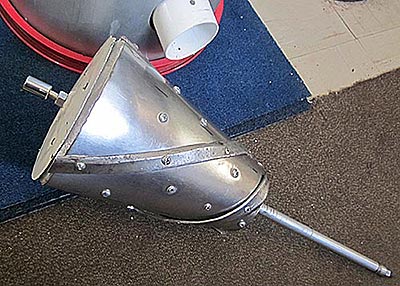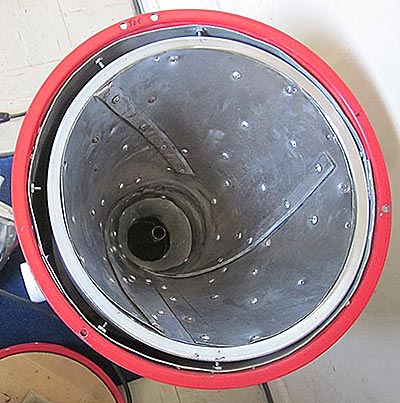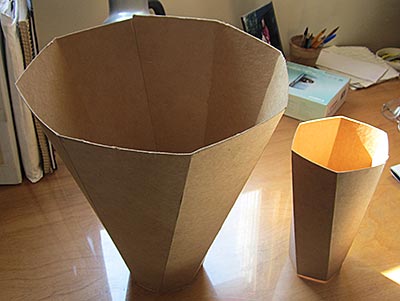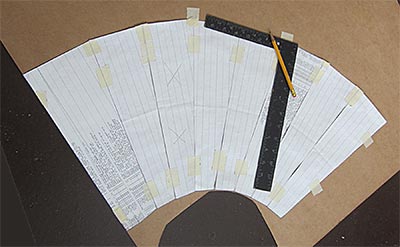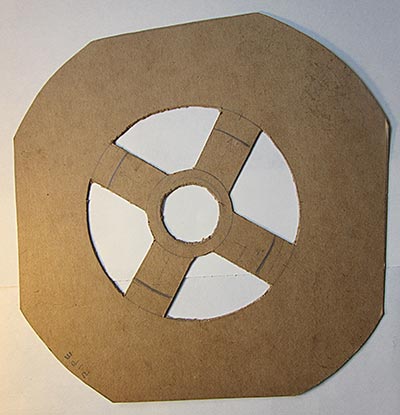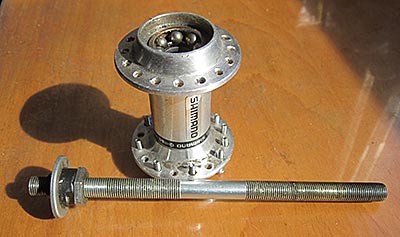An Electric Nutcracker Project
The goal of this project is to design and test an electric nut cracker for hard black walnuts and other nuts which could be made by amateurs from low cost recycled materials using simple tools. A first attempt has been built and is available for use in test mode. The photo at right shows the result of cracking black walnuts and hand separating the nut pieces from the shell pieces. This version doesn't produce decorative whole pieces. In its present form it produces smaller pieces for baking and garnish as shown in the photo. Nuts are cracked at the rate of one per second or sixty per minute which is an improvement over cracking 1 to 3 per minute using manual crackers but not as fast as industrial nut crackers. Although designed for black walnuts tests have also been done with butternuts, buartnuts, hickory nuts, hazelnuts, heartnuts, and others. Results were promising; further tweaking is expected to improve the results for odd shaped nuts like heartnut or buartnut and softer shelled nuts like hazelnuts.
The machine is modelled after a type of rock crusher used in mining and aggregates (road building, cement making, landscaping) in which a cone rotates inside another stationary cone. Nuts are dropped by hand in the top and fall down between the cones until they can go no further at which point they are cracked. The pieces continue to fall until they too are cracked and eventually emerge out the side tube. For black walnuts the space between the cones at the top is 2" and at the bottom is 1/2". The cones are made of sheet metal backed with concrete. The sheet metal, preferably stainless steel, provides hard abrasion resistance while the concrete provides reinforcement so the sheet metal does not bend, and provides weight for kinetic energy to crack the hard walnuts. The top of the machine comes off so the inside can be cleaned. Photos below show the inner rotating cone and the outer stationary cone. The body is made of sheet metal in the form of inner and an outer cylinders. The cracked nuts are guided out the side through a 60 degree bend plastic pipe from a home improvement store. The motor, salvaged from a broken lawn mower, is bolted to the top of the machine. The connector between the motor and the inner cone is a common hex socket from a bin at a second hand shop. Some of the other parts are from discarded bicycles. The sheet metal for the cones is from the stainless steel door of a discarded automatic dishwasher. The sheet metal for the body is from an outdoor handicap chair lift. The metal was cut with an angle grinder, a metal cutting blade in an electric jigsaw, and a hacksaw. An electric drill was used for making holes for fasteners. No welding is required.
Although the first version of the conecracker cracks nuts, it is complex and requires an unreasonable amount of labour to make. It inspired ideas for simpler conecrackers requiring less labour to make. The body could be a plywood box, a bucket, or a converted shop vac. The cones are twisted polygons drawn with ruler and compass, omitting making and fitting the ribs on the existing cones. Photos below shows cardboard models of the polygonal cones and how the model was marked on the cardboard by using identical paper sections taped together. The sections are easily drawn with a pencil and compass. No math is required. Instructions for making the twisted hexagonal cones are here. The nut pieces drop straight out the bottom instead of out the side. Photos below show a cardboard model of the metal plate which fits on the bottom with a hole in the centre for bearings and holes around that to let the nut pieces drop out, also a photo of the bearings in a bicycle hub to be cut to fit in the hole in the plate, and the bicycle axle to be imbedded in the cement inside the inner cone. Making the height of the inner cone relative to the outer cone adjustable would allow variation of the minimum spacing, which would improve effectiveness in handling different sizes of nuts. Here is the image of a spreadsheet to calculate dimensions and weights for comparing conecrackers of different sizes.
We are looking for interested volunteers to help build and test prototypes. We hope to enable more people to enjoy the delightful taste and healthful nutrition of local nuts. For more information email ECSONG Vice-Chair Bill Watt.
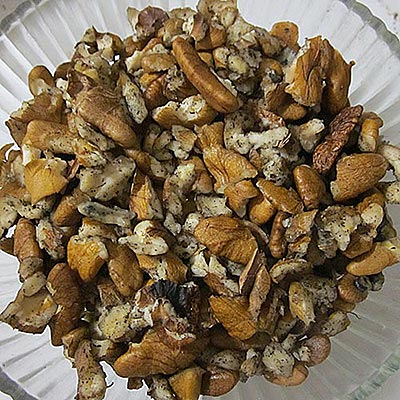
the output after removing shell fragments
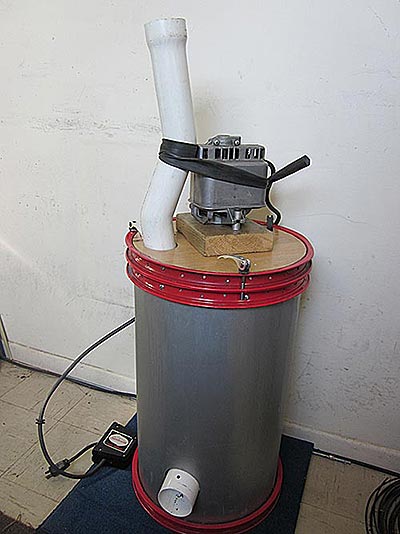
the operating cracker, version 1
